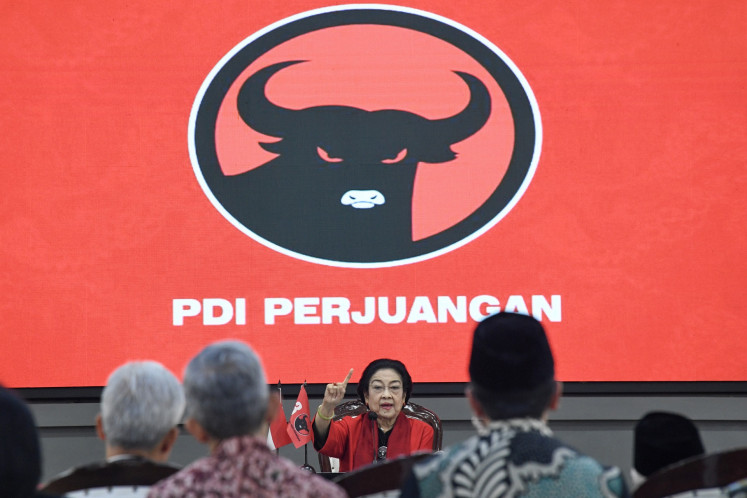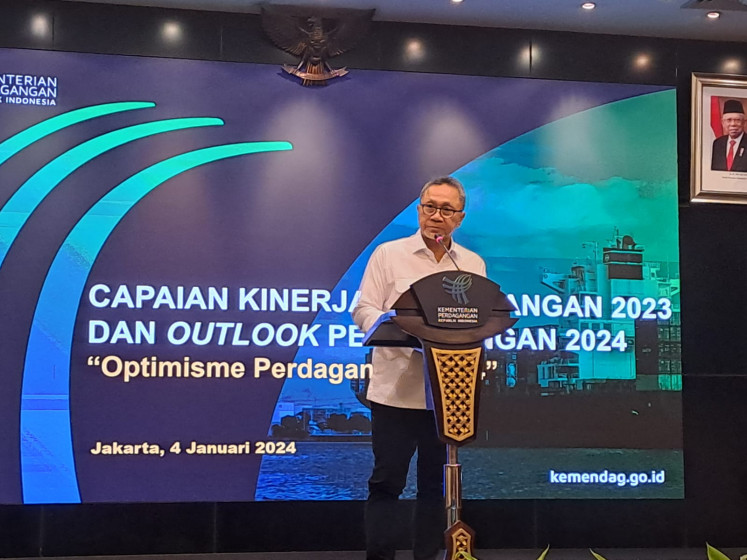Conservation that works for people
The conservation movement in Indonesia has been going for at least four decades
Change Size

T
he conservation movement in Indonesia has been going for at least four decades. Forest and land rehabilitation activities started in the late 1960s. What started out as a project then became a national movement affirmed through Presidential Decree No. 8/1976.
Since then, the movement has never stopped. The government's commitment to reforestation and restoration activities loomed with the launch of Gerakan Rehabilitasi Hutan dan Lahan (Gerhan), or the Rehabilitation Movement of Land and Forested Areas. The movement to plant 1 million trees has now turned to 1 billion trees.
The government's commitment to ecosystem and biodiversity conservation is evident in the fact that the Nature Conservation Directorate has been in place since forestry affairs fell under the auspices of the Agriculture Ministry. When the Forestry Ministry was set up in 1983, the directorate was expanded into the Forest and Nature Conservation Directorate General.
Now, 23.5 million hectares of land have been allocated for protected areas. The conservation movement has been strengthened with support from local, national and international NGOs. Representative of civil society, NGOs dedicated to nature conservation mushroomed during and after the Reform Era. Conservation is therefore not new in Indonesia. The question is: How strong is the commitment to fighting deforestation and land degradation?
Indonesia lacks success stories. Deforestation and land degradation speeds up almost unchecked, whereas restoration, if any, cannot match the destruction rate. Ironically, reformation, democratization and decentralization have failed to uphold the conservation movement.
Most conservation movements at the grassroots level are managed in a project-oriented approach, which is characteristically temporary and marked with rigid administrative rules, monumental performance indicators and unrealistic targets. The output and outcomes of conservation movements at the grassroots level are short-lived. In most cases, conservation projects, which are aimed at igniting the spirit of independency, instead weaken a community's independence, which is key to the empowerment movement in natural resources conservation.
A comfortable environment has yet to be deemed a basic need. In many cases, the community that lives surrounding a forest encroach on the forest not because of its limited conservation knowledge but rather limited choices.
Mainstreaming conservation movements at the grassroots level through extension and outreach programs will be insufficient without providing an environment that leads to the establishment of an empowered community that is independent and has sustainable livelihoods as well as bargaining power.
A powerless community usually stems from poverty, either natural or structural. Natural poverty is the result of low-level quality of human and natural resources that hamper people's productivity. Structural poverty is generated directly or indirectly by inappropriate institutional arrangements and government policies that are impartial to the poor.
A powerless community easily becomes the object of extortion for a powerful community, which will further impoverish the powerless. The community tends to ignore conserving its own habitat, resulting in the gradual degradation of community members' quality of life, plunging them into poverty and powerlessness. Conservation movements should be able to cut the vicious circle of natural resource degradation, poverty and powerlessness.
Without touching the root of the real problems, conservation will only become discourse, a source of inspiration for new projects, but will never exist and be demanded by local communities.
The empowering of communities living near forests cannot merely be achieved through better access and control of forested land but should also involve strengthening productive culture, thereby enabling community members to utilize and give added value to their rich natural resources.
Generating income from conservation, therefore, cannot simply be approached by allocating forest land to forest dwellers.
The accumulation of natural resource assets in powerless communities will invite free-riders who will exploit natural resources.
The creation of sustainable livelihoods can be done through the establishment of environmentally sound agriculture-based activities that can generate short-, medium-and long-term income sources.
The transformation process is not that simple, however, since forest-resource extraction has become
habitual and generates easy money. On the other hand, agriculture-based activities, regardless of their prospective business plans, will take time before profits can be earned. Therefore, people are not easily attracted to the new income generating activities because they need to see a proven model so as not to face the risk of failure.
The development of sustainable livelihoods at the grassroots level is not easy; it is site-specific and knows no 'panacea' to speed up the development process. Community empowerment facilitators should be able to convince a local community on the benefits and financial improvements of the offered income generating activity models.
They should be able to deliver promising profits in a relatively short time, since local communities are often impatient.
Community engagement in a conservation movement, in return for sustainable livelihood facilitation, has to be formalized in a social contract to ensure the creation of new income generating activities, rather than complementary income generating activities on top of the 'business as usual' natural resources extraction. Communities must have a strong and independent economic institution that is developed by, from and for their own.
The institution must be able to facilitate the development of community-based economic activities from production, processing and marketing, as well as access to the banking sector.
It is clear that the shift from a powerless to an empowered community is a social and economic process that cannot be achieved instantly within a limited time and rigid resource allocation. Conservation at the grassroots level can only materialize through a social and economic transformation movement.
The writer is the program director of the Tropenbos International Indonesia Program, Bogor, West Java.









